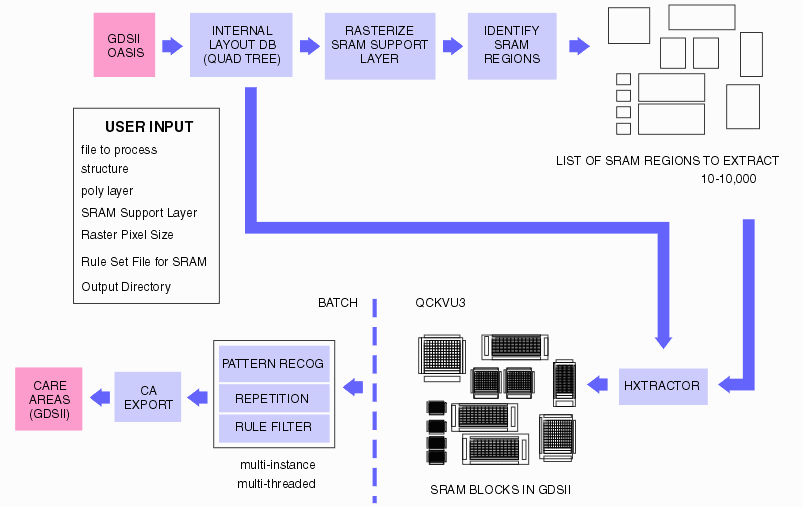Automated SRAM Identification
Steve DiBartolomeo, Applications Manager
last revised: November 15, 2010
Large ASICs can have thousands of SRAM blocks scattered across the layout. These SRAM regions are inspected using a different algorithm than the logic regions and require that we extract and separate the "care areas." Generating such regions manually is extremely time consuming. We describe a software routine that automates the process and can handle large ASICs in an hour.
Objectives
Extract all SRAM unit cells and convert them to care areas.
Do not extract page breaks, column breaks, drivers or other non-repeated structures.Do not require the user to know anything about the cell names or file hierarchy
Process large GDSII/OASIS files in 60 minutes or less including load/identify/merge.
The user will load the layout file, specify the POLY and SRAM support layers.


